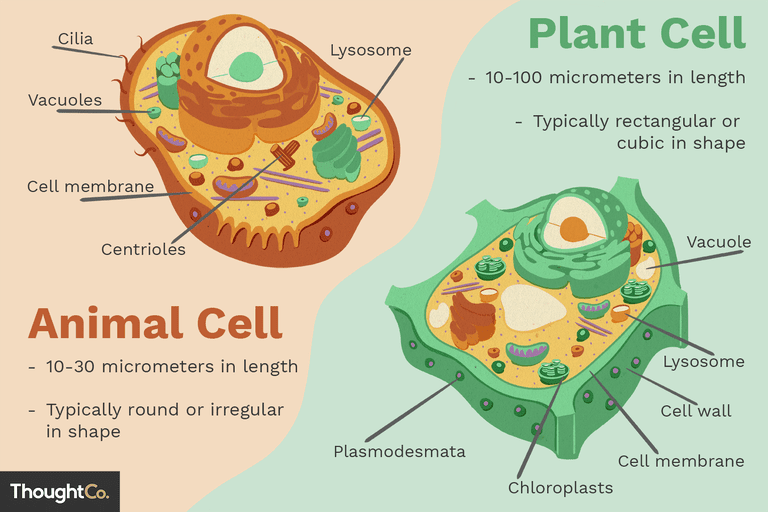Have you ever thought, what is a human body made of? You are made of different organs like heart, brain, fingers or legs. They are further made of smaller units called tissues. Those tissues are further composed of the basic unit- called cells.
They were first discovered by Robert Hooke via a primitive microscope while observing cork. He saw them as hexagonal pieces, and named them cell because he thought they resembled the tiny rooms that monks lived in. Now while Robert Hooke was a genius, he absolutely couldn’t have been more wrong when he compared the cell to a boring room. Because cells, at any instant, are more bustling and busy than your average town.
A cell is composed of a large number of sub-structures, each performing a specific task. They are called organelles. There are a lot of special, exotic organelles, but there are some common ones found in a majority of- if not all- cells.

Cell membrane- The boundary that separates the cell from the outside environment. It is selectively permeable ie: only lets some particles enter, and rejects the rest. It protects the structure and integrity of cell.

Nucleus- The main control centre of the cell. It controls everything. It has DNA that encodes instructions regarding how the different parts of cells should work.

Mitochondria- If there was one thing that I could promise you will remember years after you finish school, it is that ‘Mitochondria is the powerhouse of the cell.’ It manufactures ATP molecules, which are responsible for providing energy to the cell for its functions.

Endoplasmic Reticulum- It is primarily involved with proteins. It makes proteins from raw materials called amino acids, modifies existing proteins via folding their shapes, and transports finished proteins to various parts of the cell.

Ribosomes- They are often present inside the ER, but they can be independent too. It is their job to make the proteins mentioned above. They are not made of DNA, but RNA. They are called cell factories due to manufacturing proteins through being a part of ER.

Golgi bodies- If you want an analogy, think of it as a mad scientist. It does weird stuff to modify chemicals into other chemicals. It cuts large proteins into smaller ones, combines proteins with carbs, controls usage of lipids, and sends stuff outside the cell to other parts of the body.

Vacuoles- It is the quintessential Covid teenager. Fat? Check. The only thing it does is storing food inside it? Check. It is like a storage bag in the cell which stores food, minerals and water.

Lysosomes- They are the suicide bags of cells. When a cell becomes old or infected, they burst open, flooding the cell with corrosive enzymes that kill the cell. They are critical to waste disposal, as without them, dead cells won’t be removed properly.

Plastids- They manufacture important chemicals for cell sustenance. The most famous such plastid is chloroplast, responsible for photosynthesis. Unfortunately, they’re not found in animals, so we need to find other ways to get that stuff (my heartiest condolences to the plants and other animals that I have eaten throughout my life. If you want to blame someone, blame it.)


